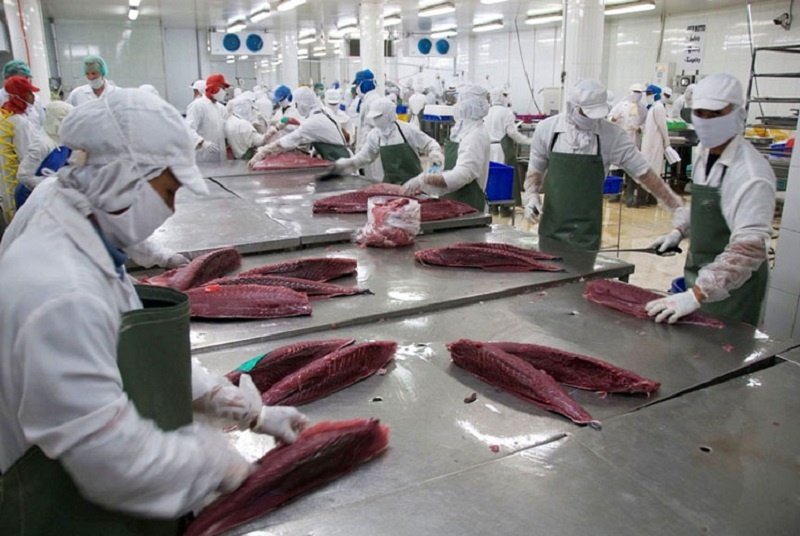From January 10, 2026, the EU will apply a new control system for imported seafood, requiring electronic traceability throughout the chain. Vietnamese businesses need to digitize data and standardize information from fishing vessels, cold storage to processing plants to maintain exports and avoid risks.
According to the Ministry of Agriculture and Environment, the export turnover of agricultural, forestry and fishery products in the first 10 months reached 58.13 billion USD, up 12.9% over the same period. Of which, Asia continues to be the largest market (44.7%), followed by America (22.7%) and Europe (13.8%).
In the seafood sector alone, according to data from the Vietnam Association of Seafood Exporters and Producers (VASEP), in the first 9 months of 2025, seafood exports to the EU reached 777 million USD, an increase of 13% over the same period last year, including white-leg shrimp, pangasius, tuna,…
VASEP representative said that although there are many positive signals, from January 2026, the new control system in this market for imported seafood has caused difficulties for seafood enterprises. A series of new requirements on the environment, traceability and sustainability of the supply chain,… from this market are posing challenges for our country’s seafood industry.
According to VASEP, the EU is implementing Regulation 2023/2842 – a new control system for imported seafood, with the most important change being the complete transition from paper records to digital management and real-time traceability. This is one of the strongest EU adjustments in nearly 15 years to the global seafood supply chain.
Accordingly, the new regulation requires a much higher level of transparency in the catch certification system than before. The entire journey of the product must be clearly shown from catching or harvesting, purchasing, transporting, processing to exporting. Each batch of fishery products exported to the EU must have an electronic catch certificate with detailed data such as vessel number, fishing area, type of fishing gear, date of catch, yield, travel itinerary, intermediary units and processing plants.
In addition, the EU also switched to mandatory operation of the CATCH (Catch Certification Scheme) electronic management system on the TRACES platform – a common database serving to control the entire seafood import chain into this market. After the application date, paper records will no longer be accepted. Enterprises must submit electronic certificates and synchronize data with importers and competent management agencies.
According to the roadmap, from January 10, 2026, the core contents of Regulation 2023/2842 will officially take effect. From January 10, 2029, the traceability requirement will be extended to processed products such as canned fish, surimi, processed shrimp and mollusks, as well as seaweed. This means that there is not much time left for exporting countries, including Vietnam, to prepare.
“With seafood export turnover to the EU reaching billions of USD each year, when the new system is mandatory, Vietnamese businesses will have to convert from an internal traceability model to a data system throughout the entire chain, ensuring consistent information between fishing vessels, purchasing facilities, cold storage, processing plants and export records. This will significantly impact Vietnam’s seafood export supply chain,” said VASEP.
VASEP recommends that businesses proactively review the entire process of managing traceable data and minimize the use of distributed manual storage. Early application of global identification standards, information standardization and data digitization will help increase compatibility with the EU system and reduce risks during inspection.
In addition, businesses are advised to work early with importers in the EU to unify the electronic filing process, avoiding the situation of documents being piled up close to the mandatory deadline, which can easily lead to delays or failure to meet technical requirements. The preparation process also requires coordination with the Ministry of Agriculture and Environment, industry associations and control agencies at fishing ports to ensure that catch certificates and value chain data are standardized right from the source stage.




Add Comment